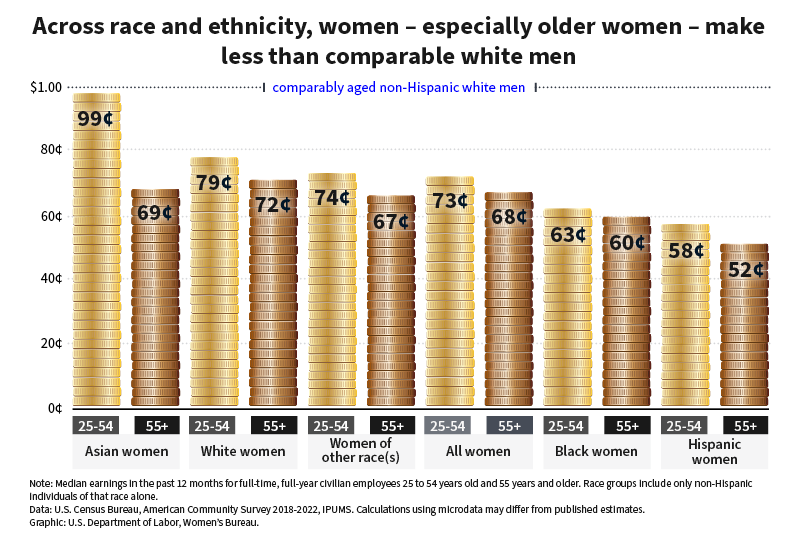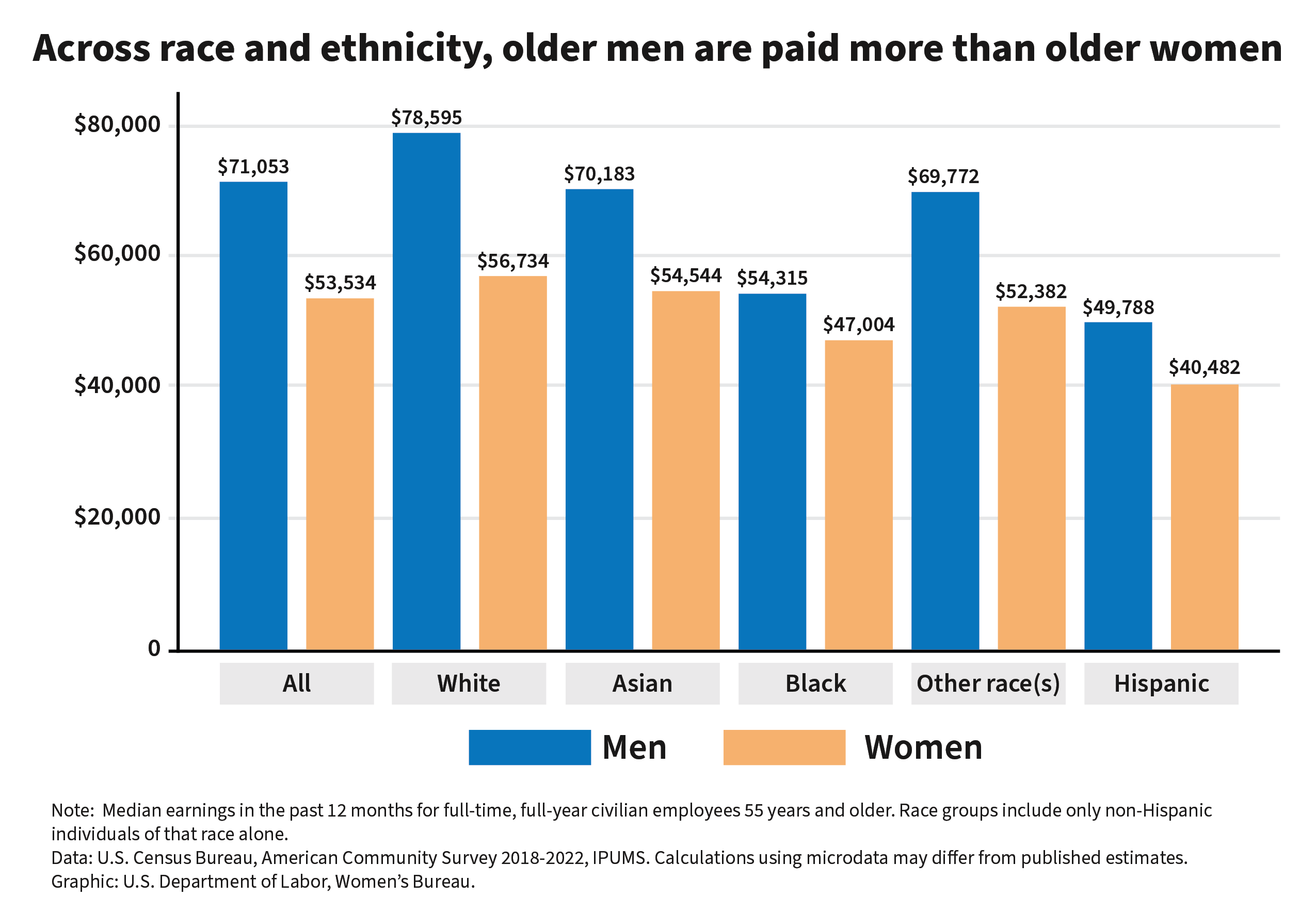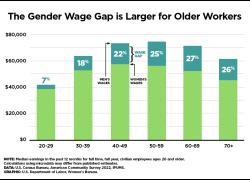Older women workers of color face wage penalties for their age, their gender and their race. Indeed, the wage gap for full-time, full-year workers is particularly sizable for older Black and Hispanic women – who at the median are paid just 60 cents and 52 cents, respectively – for every dollar paid to older white, non-Hispanic men. White women 55 and older also face wage penalties: they are paid 72 cents for every dollar paid to their male counterparts.

Across all major race and ethnic groups, the pay gap is larger for older women than younger women when comparing wages to those of comparable non-Hispanic white men. For example, prime-age (25- to 54-year-old) Hispanic women are paid 58% of the wages of prime-age white, non-Hispanic men, while Hispanic women 55 and older are paid only 52% of the wages of older white, non-Hispanic men.
It’s also the case that within each race and ethnic group, older women earn less than older men. Older Black and Hispanic women are paid wages closest to men of their own race ($47,004 and $40,482, respectively, at the median), ethnicity and age (87% and 81%, respectively), but this is a function of the relatively low wages of older Black ($54,315 at the median) and Hispanic ($49,788 at the median) men, as opposed to an indicator of how “well” their female counterparts are doing. While older white (72%) and Asian (78%) women earn less relative to their more highly-paid male counterparts, their median pay ($56,734 and $54,544, respectively) remains substantially greater than that of older Black or Hispanic women.

Overall, women 55 and older are paid 75 cents for each dollar paid to men 55 and older ($53,534 versus $71,053). In contrast, the gender wage gap is smaller for prime-age women; they are paid 83 cents for every dollar prime-age men are paid ($52,381 versus $63,384).
Causes and consequences
Older women, particularly older women of color, experience relatively low wages for many intersecting reasons. These lower wages, in turn, have implications both in the short term and the long term as women attempt to reach and maintain financial security in their golden years.
Women of color are over-represented in the lowest paying occupations. Our analysis estimates that Black women lost $42.7 billion and Hispanic women $53.3 billion in wages relative to white non-Hispanic men as a result of their disproportionate employment in low paying occupations.
Caregiving responsibilities, many of which are concentrated among older women, can further exacerbate the situation. On any given day, almost one-in-four (23.5%) women ages 55 or older provide some type of unpaid care; and in an average year these women devote the equivalent of more than five weeks of full-time unpaid care to loved ones. Furthermore, time taken out of the labor force or prioritized on childrearing when women are younger results in wage penalties that accrue over time. To the extent that these responsibilities impact their paid work hours, women may lose out in the “up or out” dynamics that exists in many workplaces.
Discrimination in the workplace further contributes to lower wages for older women. In fiscal years 2020-2023, for instance, the Equal Employment Opportunity Commission (EEOC) reported that through its administrative enforcement efforts alone it recovered over $146 million for women under the Age Discrimination in Employment Act, which makes it illegal to discriminate against workers older than 40. The legal system and the EEOC explicitly acknowledges the intersectional nature of age and sex discrimination.
Women’s lower pay is not without consequence. Lower wages result in a diminished ability to save for retirement – which given women’s longer life expectancy and therefore additional years in retirement – is especially harmful to women’s economic security in old age. It’s not surprising that older women are more likely than older men to be living in poverty (12.1% versus 9.8%). And a lifetime of lower wages for women and especially women of color translate into markedly lower wealth – another key indicator of financial stability. Among those 50 and older, the median wealth of white men is $274,376, while for white women it is $214,201, Hispanic women $49,921 and Black women $43,994.
Learn more about women, work, aging and financial security and the gender wage gap for older women workers.
Erin George is an Economist at the Women’s Bureau. Gretchen Livingston is the Quantitative Research Branch Chief at the Women’s Bureau.

 U.S. Department of Labor Blog
U.S. Department of Labor Blog




